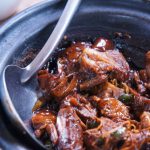Circular Economy in Food: Reducing, Recycling, and Regenerating
The concept of a circular economy has gained momentum in recent years as a sustainable approach to managing resources. When applied to the food industry, the principles of reducing waste, recycling materials, and regenerating natural resources offer a promising solution to the environmental challenges posed by the current linear food production and consumption model.
**The Problem of Food Waste**
One of the key issues in the food industry is the staggering amount of food waste generated at every stage of the supply chain. From farm to fork, a significant portion of food is lost or discarded due to inefficiencies in production, distribution, and consumption. According to the Food and Agriculture Organization of the United Nations, around one-third of all food produced for human consumption is wasted globally each year.
**Reducing Waste through Innovation**
To combat food waste, stakeholders in the food industry are increasingly turning to innovative solutions that prioritize waste reduction. This includes initiatives such as precision agriculture techniques to optimize crop yields, improved packaging to extend the shelf life of perishable goods, and the development of alternative food products made from by-products or surplus ingredients.
**Recycling Materials for a Sustainable Future**
Recycling materials within the food industry is another crucial aspect of the circular economy. This involves finding ways to repurpose food waste and packaging materials to create new products or inputs for the production process. For example, food companies are exploring the use of compostable packaging made from biodegradable materials that can be easily recycled or returned to the soil as organic matter.
**Regenerating Natural Resources**
In addition to reducing waste and recycling materials, regenerating natural resources is a fundamental principle of the circular economy in food. This involves restoring and replenishing the ecosystems and resources that support food production, such as soil, water, and biodiversity. Practices like regenerative agriculture, which focuses on enhancing soil health and biodiversity, play a crucial role in ensuring the long-term sustainability of food production systems.
**Collaboration for a Circular Food System**
Achieving a truly circular food system requires collaboration across the entire value chain, from farmers and producers to retailers and consumers. By working together to implement sustainable practices and innovative solutions, stakeholders in the food industry can create a more resilient and resource-efficient system that minimizes waste and maximizes the value of resources.
**Embracing a Circular Future**
As the global population continues to grow and environmental challenges escalate, the transition to a circular economy in food is no longer a choice but a necessity. By embracing the principles of reducing waste, recycling materials, and regenerating natural resources, the food industry can play a significant role in building a more sustainable and resilient future for generations to come.
**In Summary**
The shift towards a circular economy in food offers a promising path towards a more sustainable and efficient food system. By focusing on reducing waste, recycling materials, and regenerating natural resources, stakeholders in the food industry can work together to create a more resilient and environmentally friendly model of food production and consumption. Through collaboration and innovation, we can build a future where nothing goes to waste, and resources are used wisely and thoughtfully to nourish both people and the planet.





